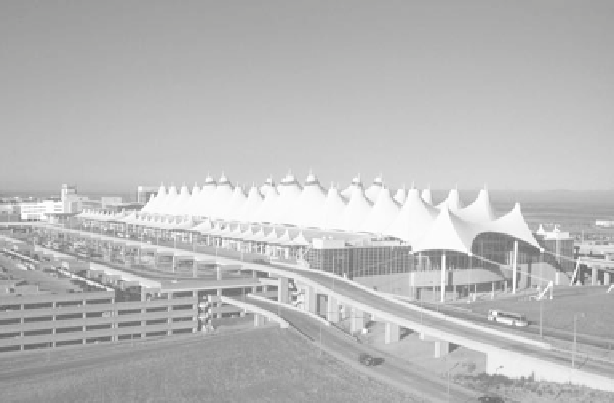Travel Reference
In-Depth Information
Good planning de
nes the desired result and works in a systematic manner to achieve success. The
following steps brie
y describe a logical sequence:
1. De
ne the system.
What are its scale, size, market, character, and purpose? Formulate
objectives. Without a set of objectives, the development concept has no direction. The objectives
must be comprehensive and speci
c and should include a timetable for completion.
2. Gather data.
Fact
finding, or research, provides basic data that are essential to developing the
plan. Examples of data gathering are preparing a fact book, making market surveys, undertaking
site and infrastructure surveys, and analyzing existing facilities and competition.
3. Analyze and interpret.
Once collected, the many fragments of information must be interpreted
so the facts gathered will have meaning. This step produces a set of conclusions and
recommendations that leads to making or conceptualizing a preliminary plan.
4. Create the preliminary plan.
Based on the previous steps, alternatives are considered and
alternative physical solutions are drawn up and tested. Frequently, scale models are developed to
illustrate the land-use plans; sketches are prepared to show the image the development will
project;
financial plans are drafted from the market information, site surveys, and the layout plan
to show the investment needed in each phase of the project and the cash
flow expected; and legal
requirements are met.
5. Approve the plan.
The parties involved can now look at plans, drawings, scale models, estimates
of costs, and estimates of pro
ts and know what will be involved and what the chances for
success or failure will be. While a great deal of money may have been spent up to this point, the
sum is a relatively small amount compared to the expenditures that will be required once the plan
is approved and master planning and implementation begin.
6. Create the
final plan.
This phase typically includes a de
nition of
land use
; plans for
infrastructure
facilities such as roads, airports, bike paths, horse trails, pedestrian walkways,
sewage, water, and utilities;
; landscape plans; zoning and other land-use
regulations; and economic analysis, market analysis, and
financial programming.
architectural standards
7.
Implement the plan.
Implementation carries out the plan and creates an operational tourism
development. It also follows up and evaluates. Good planning provides mechanisms that
give continuing feedback on the tourism project and the levels of consumer satisfaction
achieved.
Good planning should eliminate problems and provide user satisfaction. The
final user is the judge
in determining how successful the planning process has been.
Denver International Airport
exempli
es good planning
for traveler convenience.
The modern terminal
building has separate drop-
off levels for passengers
arriving in private and
commercial vehicles,
close-in parking, and trains
to shuttle passengers from
the terminal to three
concourses.
Photocourtesy
ofDenverInternationalAirport.









Search WWH ::

Custom Search